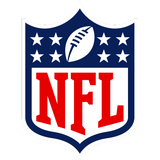
Why what's missing in states' youth concussion laws matters
PHOENIX (AP) With a push from the NFL, all 50 states and the District of Columbia passed youth concussion laws over the span of about five years.
They were modeled after legislation passed in Washington state in 2009. But an Associated Press analysis shows just 21 of the laws that followed included all four key elements in Washington's bill.
''Washington state is the `gold standard,''' said Peter Carfagna, the founder of a sports marketing company and a teacher at Harvard Law School. ''I have a hard time thinking of a good reason why you'd deviate from it.''
Here's an explanation of why those basic tenets are considered important:
IMMEDIATELY REMOVING ATHLETE SUSPECTED OF HAVING A CONCUSSION
This is the most rudimentary of the provisions, and yet it's not mandated by two states, Illinois and Wyoming.
Immediately leaving a game or practice is important because a person is at increased risk for a second, more dangerous, concussion while the brain is still healing from one.
''One and you're out. No same-day return,'' said Richard Ellenbogen, co-chairman of the NFL's head, neck and spine committee. ''Anybody suspected - the key word is `suspected' - of having a concussion, (is) pulled out.''
Arizona and South Carolina allow a player to return the same day if cleared by a doctor who's present.
EDUCATING COACHES
As news about head injuries connected to sports has spread, it's become easier to drive home the importance of recognizing symptoms so a coach, for example, knows when to send a player to the sideline.
''Awareness has risen, and we're evaluating more students for concussions than ever,'' said Cynthia Clivio, a high school athletic trainer for the private Kamehameha Schools in Hawaii. ''Part of it is, our coaches are more educated.''
New York's law, for example, says schools' coaches, gym teachers, nurses and athletic trainers must take a course that covers how to recognize, treat and monitor students' concussions.
INFORMATION FORM SIGNED BY ATHLETE AND PARENT
Part of the process of increasing awareness is making athletes and parents aware of the dangers of concussions - and of the dangers of continuing to play or practice when suspected of getting a concussion.
Dr. Dawn Comstock, who is studying the laws' effectiveness as part of a project funded by the Centers for Disease Control, called those forms ''an important part of the overall education piece.''
WRITTEN CLEARANCE BY A HEALTH CARE PROVIDER WITH CONCUSSION TRAINING
The more specific this part of a law, the lower the chances an athlete will return to action before it's safe.
This element of the laws was the least consistent. Only 30 states other than Washington contain both elements - that the clearance be in writing, and that it come from a health care provider with concussion training.
''That language was very carefully chosen,'' said Jay Rodne, the Republican who sponsored the law in Washington state. ''We wanted to make sure ... a school district could not just have an uncertified or unlicensed athletic trainer who was given the title `athletic trainer' but had no certification or no credentials to clear an athlete.''
Rodne, along with academics who tracked the laws, said advocacy groups for various types of health care providers tried to influence decisions on who would be allowed to clear athletes.
As for requiring something in writing, Harvard's Carfagna said: ''Without having something in writing to establish who gave the clearance, there's a better chance it could be someone unqualified. There's no fingerprint.''
EVEN LAWS THAT MEET ALL FOUR STANDARDS AREN'T AS STRONG AS THEY COULD BE
Rodne said enforcement mechanisms were too costly to get approved.
In Oklahoma last year, a bill that failed would have suspended athletic trainers, coaches or referees who allow an athlete with a concussion to return to action later that day.
Other attempted improvements were rejected, too. In Massachusetts, for example, baseline concussion testing for all high school athletes - to allow someone treating them to better gauge whether they have a head injury - was considered in 2013. In Maryland, a 2014 bill would have made players on one high school football team per county wear concussion impact sensors to track brain injuries.
''Our work is not done. It's not even close to being done,'' Ellenbogen said. ''We're changing the culture, but we've got to reach all Americans.''
---
Follow AP Pro Football Writer Howard Fendrich on Twitter at http://twitter.com/HowardFendrich
Follow AP National Writer Eddie Pells on Twitter at http://twitter.com/epells
---
Online:
AP NFL website: www.pro32.ap.org and AP NFL Twitter feed: http://twitter.com/AP-NFL










